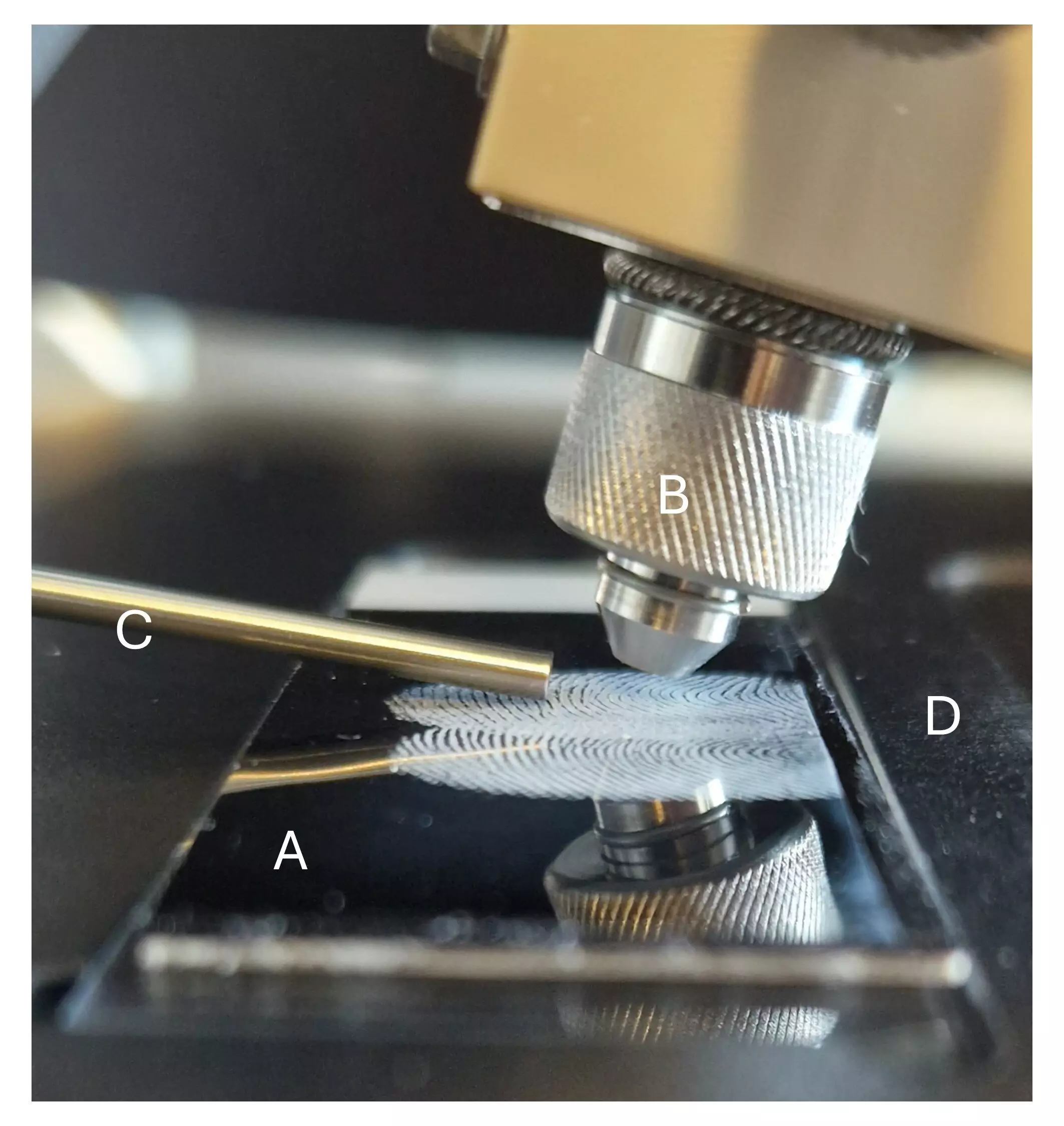The landscape of forensic science is on the verge of a significant transformation, thanks to groundbreaking research emerging from Aarhus University. This pioneering study marks the first instance of chemical imaging being employed on gelatin lifters for the analysis of fingerprints—an advancement that holds promise for improving criminal investigations where traditional methods have fallen flat. The challenges associated with fingerprint analysis have long impeded law enforcement efforts, particularly given the fragile nature of surfaces and the complexity of overlapping prints.
Fingerprint collection has evolved over the years, but challenges persist, especially when police encounter surfaces that are less than ideal for traditional methods like adhesive tape. The Danish police often opt for gelatin lifters, which possess a unique ability to lift prints from uneven or delicate surfaces, such as the flaking paint on a wall or intricately shaped door handles. However, even this superior lifting method has its drawbacks, primarily concerning the assessment of the prints collected. Once lifted, the prints are typically photographed and analyzed using fingerprint databases. Unfortunately, standard photographic processes struggle to decipher overlapping prints and often fail to capture very faint impressions, leading to the discarding of potentially important evidence.
In the quest to enhance forensic capabilities, researchers have developed a method that integrates seamlessly into existing police workflows. This method, detailed in a recent publication in the journal Analytical Chemistry, utilizes Desorption Electrospray Ionization Mass Spectrometry (DESI-MS). This innovative technique relies on the analysis of chemical compounds present in fingerprints based on their mass. As described by postdoctoral researcher Kim Frisch, the method involves a finely sprayed solvent that ionizes and releases substances contained in the fingerprint, allowing for individual mass measurement—an essential feature for distinguishing overlapping prints and enhancing faint impressions that might otherwise go unnoticed in traditional imaging processes.
While DESI-MS has been utilized in various applications since its introduction, its potential within forensic contexts is only beginning to be realized. The researchers at Aarhus University are not merely focused on streamlining existing techniques; they are also investigating the chemical composition of fingerprints to unlock new avenues of investigation. Fingerprints encapsulate a wealth of information beyond mere patterns, carrying numerous chemical compounds that can offer clues to a person’s lifestyle, habits, and even recent activities—factors that could be critical in criminal cases.
For instance, fingerprints can reveal traces of substances such as nicotine, caffeine, and illicit drugs, along with cosmetic products. The ability to profile suspects from mere fingerprint analysis signifies a leap forward in forensic investigations. Notable research efforts are already underway globally, analyzing how fingerprints can indicate consumption of narcotics or even provide insights into an individual’s age and gender based solely on the chemical makeup of the prints.
The ongoing collaboration between the Department of Forensic Medicine and the National Special Crime Unit of the Danish Police is pivotal in translating this research into real-world applications. The implementation of chemical imaging techniques could significantly alter the trajectory of criminal investigations. While the current scanning process remains labor-intensive and cannot handle large volumes of samples swiftly, the potential for its use in serious criminal cases, such as homicides and sexual offenses, is immense.
As Frisch notes, while the present capability of analyzing samples falls short of processing hundreds at a time, the hope exists that advancements in this method could lead to its integration into everyday police operations—making it a staple in forensic analysis rather than a supplementary resource.
The research undertaken at Aarhus University signifies not just an incremental improvement but a potential paradigm shift in the realm of forensic science. With the ability to chemically analyze fingerprints lifted with gelatin, the prospects for uncovering critical evidence in criminal cases could multiply exponentially. As the scientific community continues to innovate and collaborate with law enforcement agencies, one can foresee a future where fingerprint analysis transforms from a reactive measure to a proactive tool in the fight against crime. This research not only embodies the spirit of scientific advancement but also highlights the vital role of interdisciplinary collaboration in addressing complex societal challenges.


Leave a Reply